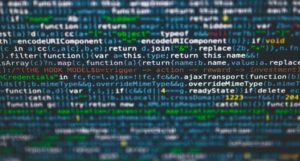Extraordinary moments of coronavirus crisis seen in new interactive art display

Credit: Red, Amber, Green Britain © Helen Snell
The extraordinary moments of the coronavirus pandemic experienced by millions across the country are reflected in a new interactive online exhibition and in-person display at the University of Exeter’s Streatham campus.
Shifting national identities, food shortages, travel restrictions and healthcare challenges are just some of the scenarios depicted in the artwork, which is informed by both personal and media accounts of the experiences people across Britain shared as they coped with the crisis.
To accompany the display and online exhibition, visitors can take part in “Do you want to see red?” a unique quiz on a specially-designed app, where visitors are asked questions based on choices they would make when faced with different health or wealth scenarios – but from the perspective of a character they are assigned at random. A version of this app formed part of the Science Gallery Detroit exhibition “Tracked and Traced,” in 2021.
The display and the online exhibition of work produced by Helen Snell during her tenure as artist in residence at the University of Exeter from September 2020 to March 2022, as part of the project ‘Inequality, Identity and the Media in Brexit-Covid 19 Britain’. This research is funded by the Economic and Social Research Council as part of UK Research and Innovation’s rapid response initiative to COVID-19.
The research is led by Professor Katharine Tyler from the University of Exeter with Co-Investigators Professors Susan Banducci and Daniel Stevens from the University of Exeter, Research Fellows Dr Joshua Blamire now at the University of Wolverhampton, Dr Laszlo Horvath now at Birkbeck, University of London and Co-Investigator Professor Cathrine Degnen from Newcastle University. The team have also been working with Freddy Wordingham and James Allen, research software engineers at the Institute for Data Science and AI at the University of Exeter in developing the interactive app.
Professor Katharine Tyler said ‘The exhibition captures the spectrum of different experiences we have shared throughout the past two years. The drawings and animations reflect news headlines, government statements, personal experiences, information and disinformation. They get to the heart of the ways in which our participants from across the country have experienced both Brexit and covid. These have been unique times which have exposed the major inequalities that underpin British society.’
Dr Joshua Blamire from the University of Wolverhampton added ‘This approach has allowed ordinary people to share their own unique stories in innovative ways, and to challenge media and government narratives. The creative materials – including drawings, photographs and interview excerpts – bring to life the diverse experiences of people in different places, and capture how Brexit and Covid have shaped our lives.’
The experts have been investigating how Brexit and coronavirus – and the inequalities associated with these major changes – have been covered by the media and experienced by different communities around the country. Examining these inequalities, and their potential effects on social and political polarisation, is crucial to understanding how British society will emerge in the future.
The artwork is inspired by images, photographs, screenshots and press cuttings contributed by people that participated in the research that captured their thoughts and feelings about the phenomena of the covid pandemic and Brexit.
Artist Helen Snell said ‘The looping, pulsing animations invoke the prevailing climate of confusion, a culture of distrust, denial, mixed messaging and political U turns. Traffic light colours run throughout the visuals to reflect the “stop start” culture many have had to live over the past few years. Many of the animations feature blanks, black outs /white outs or shadows and absences in flickering colours. The anonymous space, the amber/yellow space becomes a rich metaphor, a kick back against stereotypes, and binaries.’
Dr Laszlo Horvath from Birkbeck, University of London reflected ‘Working with Helen designing the app allowed us to explore new ways to translate our research and provided a new opportunity to get feedback from the public. It was also a great opportunity to connect with the research software engineering team at the University of Exeter.’
Professor Cathrine Degnen from Newcastle University added ‘Working as an anthropologist and an ethnographer with Helen on this project has sparked exciting insights into our research materials that would not have otherwise been possible. I know too that many of the people who participated in and contributed to Helen’s wonderful artwork were moved and inspired by this interactive aspect of our work.’
You can see the original artworks in the Arts and Culture Queen’s Building display space from 8 May – 12 June 2024. The display space is located in the West Wing Foyer on the ground floor of the building, just next to the Queen’s café. You can find out more about the display space here.
View the interactive online exhibition.
See the project website for further details about the research here.



